Neutrogena Sheer Zinc Face Sunscreen SPF 50 review
Is the face version worth the extra cost, or should you just go for the original? Plus, how this product compares to Aveeno's, which has a virtually identical ingredient list.
Neutrogena is a master of marketing: “Sheer Zinc” is a great phrase. Old-school zinc was pasty—“sheer zinc” is nothing like that. It’s next-generation. It’s sheer. It’s mineral-based. It’s a no-fuss way to take good care of your skin. Unfortunately, we’re not quite at a place where zinc-based sunscreens can be completely sheer just yet. But I will say that Neutrogena Sheer Zinc Face Sunscreen SPF 50 is a pretty great step in the right direction. Neutrogena Sheer Zinc Sunscreen SPF 50, has been on my radar for a long time now. But recently I noticed that the company also makes a face version, so I was curious to try that out first. Plus, let’s “face” it—I’m a sucker for marketing and I’m afraid to put anything on my face that doesn’t explicitly state that it’s designed for my face.
Neutrogena Sheer Zinc Face Sunscreen SPF 50 is slightly more expensive than its regular counterpart, though the regular version states that it is suitable for “face and body.” These products are very, very similar when you look at their ingredient lists. And both products are very similar to Aveeno Positively Mineral Sunscreen SPF 50, which also contains the exact same concentration of zinc oxide (21.6%). Consider them all part of the 21.6 club, I guess. It’s not as surprising when you consider that Aveeno and Neutrogena are owned by the same company: Johnson & Johnson.
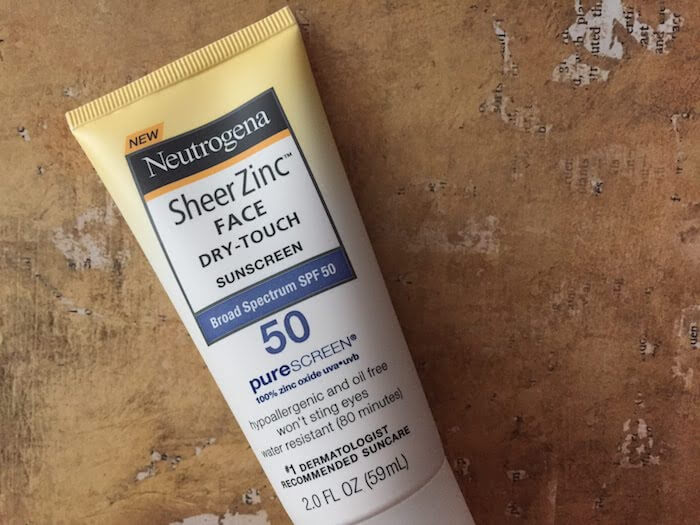
- Ingredients
- My dad’s thoughts on this sunscreen vs. the non-face version
- My review of this sunscreen
Neutrogena Sheer Zinc Face Sunscreen SPF 50 ingredients
Neutrogena Sheer Zinc Sunscreen SPF 50 ingredients (body version)
For reference, let’s take a look at how similar this list is to the Aveeno Positively Mineral Sunscreen (also SPF 50). The only difference I noticed was that polyhydroxystearic acid and glycerin swapped places in these lists.
Aveeno Positively Mineral Sunscreen SPF 50 ingredients
Neutrogena Sheer Zinc Sunscreen SPF 50: Face vs. body version
Both of Neutrogena’s Sheer Zinc products have a few similarities:
- Water-resistant for up to 80 minutes
- Non-comedogenic
- Fragrance-free and developed for sensitive skin
- Earned the National Eczema Association Seal of Acceptance
The face version says that it “won’t sting eyes.” The face version also claims that it is designed to layer under makeup. Ingredients-wise, the face version lists colloidal oatmeal and tocopheryl acetate (vitamin E) slightly earlier in the ingredients list, but I’m not sure if that means anything.
My dad’s review of Neutrogena Sheer Zinc Sunscreen SPF 50: Face vs. body version
I asked my dad which formula he preferred, and if he could tell if one of these products was likely to be easier to apply, since I know that people are constantly complaining that zinc oxide-based sunscreens are hard to rub in. Here’s what he said:
I’ve noticed certain brands like Thinksport label their zinc oxide as “non-nano” so I wondered if there were only two types of zinc oxide: nano-sized and non-nano. According to my dad, most products are probably using non-nano zinc oxide, even if they don’t state this explicitly on the label.
So it sounds like my dad thinks that nanoparticles generally aren’t recommended for use in leave-in skin care products for safety reasons. Nanotechnology is probably also more expensive so it seems unlikely that most zine oxide-based sunscreens actually contain nano-sized zinc oxide even if they don’t explicitly state that they use “non-nano zinc oxide.” This is just a guess, of course. The FDA hasn’t taken an official stance on the safety of nanoparticles in cosmetics.
The interesting takeaway here is that within the world of non-nano zinc oxide, particle sizes can differ, which may affect the cost of the material itself as well as the cosmetic elegance of a formula and how much of a white cast you end up with. So if you notice that the face version leaves less of a white cast than a similar product with the same percentage of zinc oxide and similar inactive ingredients (which is the case when it comes to the regular, non-face version), it could be due to the particle size of the zinc oxide included in the formula.
I haven’t tried the regular non-face version, so I don’t have a way to determine if the face version could be worth the price premium because it’s using a more expensive form of zinc oxide that makes it easier to rub in. If you’ve tried both versions and like the face version more, let me know!
Neutrogena Sheer Zinc Face Sunscreen SPF 50 review
If you read my review of Aveeno Positively Mineral Sunscreen SPF 50, you may remember that that product is very similar to Neutrogena Sheer Zinc Sunscreen SPF 50, which also makes it similar to the face version I’m reviewing today. Aveeno shared a pamphlet about the UVA and UVB protection offered by its sunscreen, which also contains 21.6% zinc oxide and many of the same inactive ingredients. According to this resource, in a clinical trial, this sunscreen was more effective at blocking UVA rays than other mineral sunscreens like Blue Lizard SPF 30+, CeraVe SPF 50 Face (active ingredients: 9% titanium dioxide and 7% zinc oxide), and CeraVe SPF 50 (active ingredients: 9% titanium dioxide and 7% zinc oxide).
White cast and ease of application
I haven’t tried Neutrogena Sheer Zinc Sunscreen SPF 50 (body version) yet, so I’ll be comparing the Neutrogena Sheer Zinc Face Sunscreen SPF 50 to Aveeno’s version. I don’t know if I was biased by the word “face” in the product name, but I did feel like Neutrogena’s face sunscreen was easier to rub into my skin, slightly less chalky, and left less of a white cast compared to the Aveeno product.
Take a look at the following series of pictures to see how it looks when I initially apply Neutrogena Sheer Zinc Sunscreen SPF 50 to my hand:
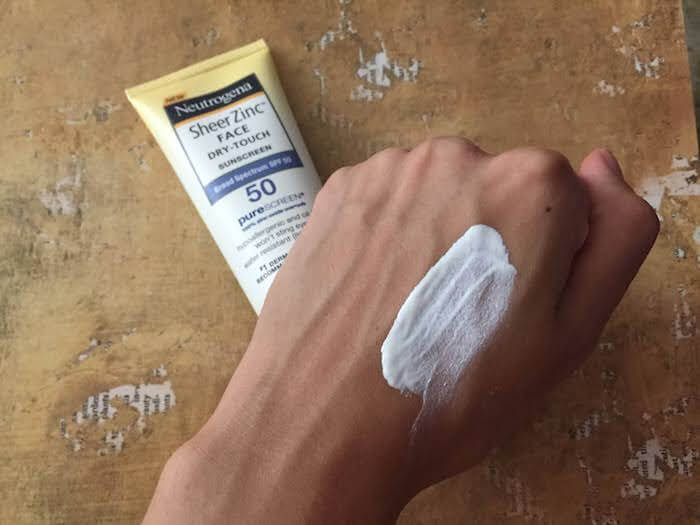
Here’s how it looks once I start rubbing it in:
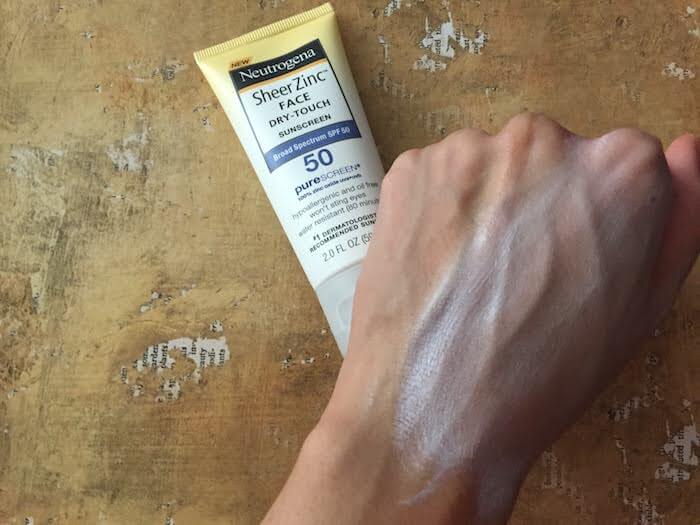
…and here’s how it looks after it’s all done rubbing in.
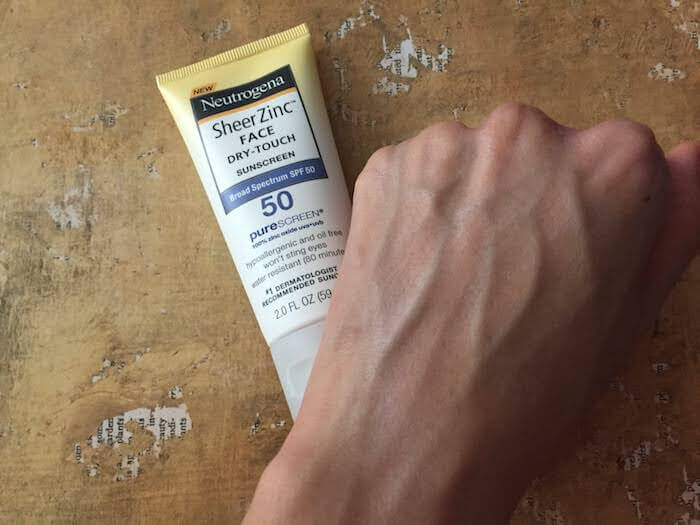
I noticed that it took less time to rub in than Aveeno’s version, and it was less gloopy. Just overall a more pleasant experience. I would like to try the regular non-face version of Neutrogena’s Sheer Zinc sunscreen so I can see how it compares to Aveeno’s.
Not as oily as some other sunscreens
It’s much less oily than Coppertone Pure & Simple Sunscreen SPF 50 (reviewed here), but that also makes it a bit more time-consuming to rub in.
If you have dry skin, here’s a word of warning: Neutrogena Sheer Zinc Face Sunscreen SPF 50 will exacerbate the flakiness of your skin. Make sure you’ve properly moisturized your skin before applying this sunscreen if you don’t want it to accentuate your face dandruff (if you have the dubious honor of being a member of this exclusive club).
Miscellaneous notes
Although this product is fragrance-free, its natural odor is virtually identical to the one I remember from Aveeno Positively Mineral Sunscreen SPF 50. I think it’s probably the chrysanthemum parthenium (feverfew) flower/leaf/stem juice. To me, it smells slightly like baby powder. Not my favorite smell in the world, but not terrible, either.
Final thoughts on Neutrogena Sheer Zinc Face Sunscreen SPF 50
I’ve used a lot of zinc oxide sunscreens in the past, because chemical sunscreens tend to sting my eyes and irritate my skin. Neutrogena Sheer Zinc Face Sunscreen SPF 50 definitely comes in at the top of the rankings out of the ones I’ve tried.
Things I like about this sunscreen:
- it has a high percentage of zinc oxide
- it’s fragrance-free
- it’s not too difficult to rub in
- it doesn’t leave my skin feeling too greasy
- it stays on nicely even when I sweat. I’ve found that other sunscreens can start melting off and don’t stay in place when I’m jogging (for example, this is a problem I’ve noticed with Coppertone Pure & Simple Sunscreen SPF 50).
- comes in a cute, travel-friendly size with a flip-top lid for easy access
It’s definitely still not perfect, though. I do look slightly Caspery after applying this sunscreen, but I think it’s worth it because of the other benefits it provides. It also does
The only things I don’t like so much about this sunscreen are:
- it leaves a slight white cast, which makes me look slightly Caspery
- feels slightly tacky/sticky after application, but slightly more palatable than Aveeno’s formula (note: this might just be in my head)
- even though it’s fragrance-free, it smells like baby powder, which is not my favorite scent
Despite these shortcomings, I think I’ll continue using this product enthusiastically and will definitely be trying out the non-face version to see if I notice any difference in terms of white cast and ease of application. I’m hoping that the non-face version will perform just as well, so I can save a little money and just spring for that product instead, since it’s not quite as pricey.
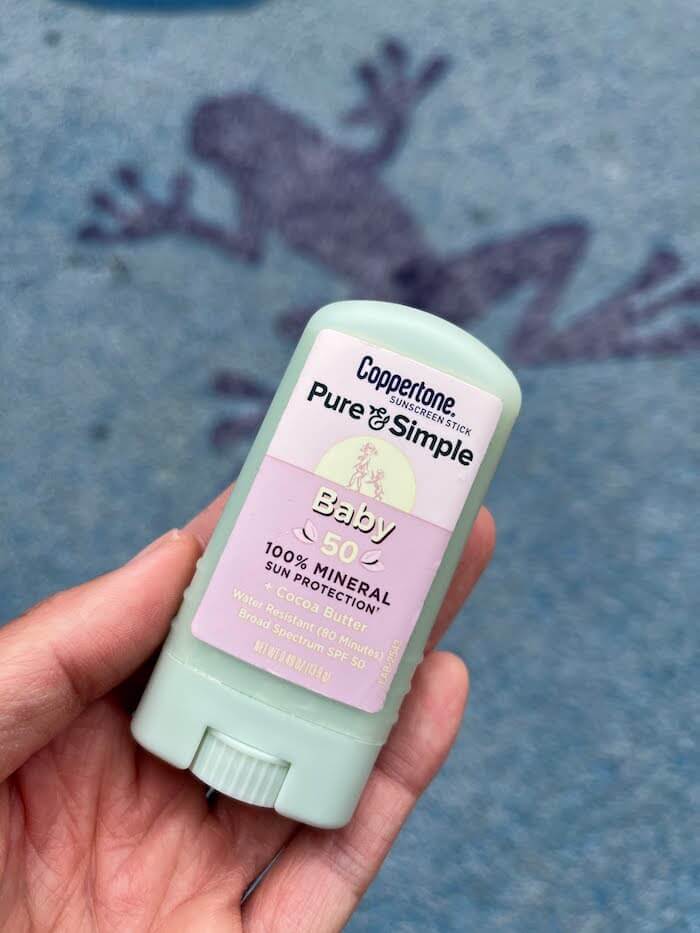
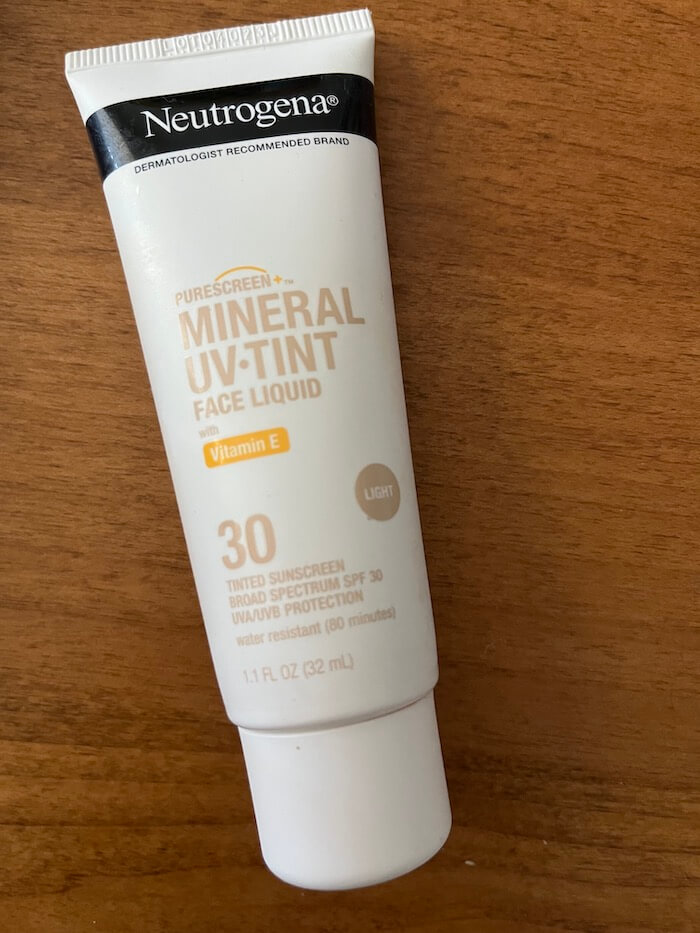
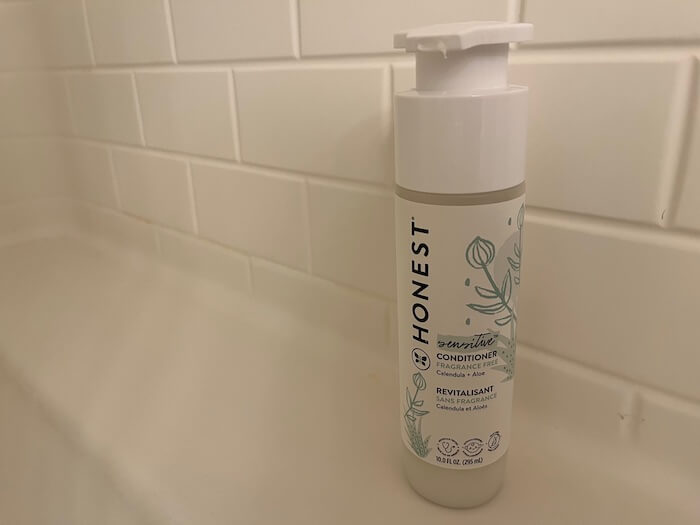

Share this post
RSS
Facebook
Reddit
Email